FOR MEMBERS AND WILDLIFE LOVERS SUMMER 2023





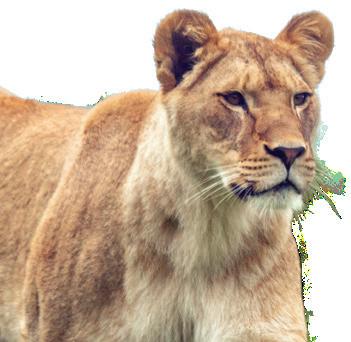
ABRINGING BRITAIN'S DORMICE BACK FROM THE BRINK

This year we've been celebrating the community of volunteers who support us. June Mangan, volunteer at London Zoo, shares her experience with Wild About.
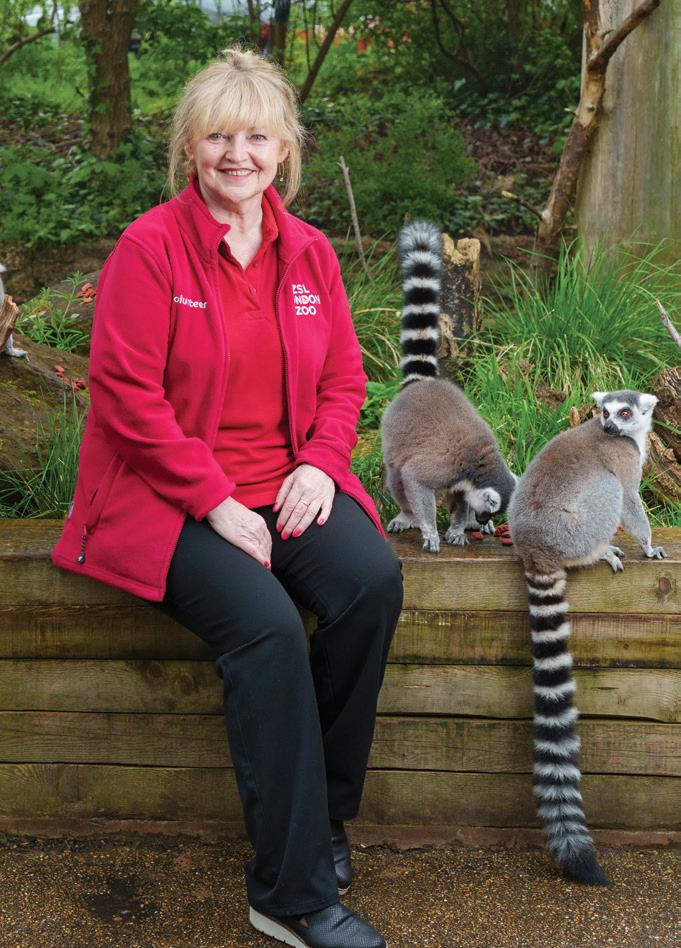
“I retired just as the pandemic hit,” says June. “It had scuppered by travel plans so, when I saw the advert asking for Zoo volunteers, I thought it would be nice to do it for a few months. I fell in love with it and I’m still here three years later!
“I’ve found that enhancing a visitor’s day is good for my wellbeing. The satisfaction of watching a child’s smile when they spot an unexpected animal, or hearing their delight when they tell me what they know, is beyond compare. I learn something new each shift from the zookeepers, I’ve had glimpses of new-born animals, I’ve been there when Kiburi the gorilla met his new family… The list goes on. It’s also great exercise, so much better than any gym.”
To find out about volunteering vacancies at both Zoos, visit zsl.org/volunteer
London Zoo, Regent’s Park, London NW1 4RY
Tel: 020 7722 3333 zsl.org
Registered Charity No. 208728
For more information about Membership, please contact our supporter contact team on 0344 225 1826.
Editor: Jonathan Kemeys

Design: Emma Atkinson/Alliance Creative wildabout@zsl.org
With thanks this issue to: Will Amlot, Sonya Anson, Clare Bowers, Tina Campanella, Joe Capon, Melissa Charles and family, Dave Clarke, Stephanie Deas, Gemma Dipple, Emma Edwards, Hannah Fisk, Celine Gamble, Matthew Gould, Charlotte Gurden, Penny Hamilton, Robert Harland, Catherine Howes, Hayley Jakeman, Becca Keefe, June Mangan, Hannah McCormick, Sarah McGregor, Steve Merrick-White, Tony Sainsbury, Nicolette Scourse, Elyse Smith, May Moe Wah.
Wild About is printed on paper certified by the Forest Stewardship Council (FSC) and contains elemental chlorine free (ECF) fibre, which comes from wellmanaged forests. Your copy of the magazine is sent to you in a recyclable envelope.
Wild About is published three times a year and distributed to ZSL Gold Members and supporters. No part of Wild About may be reproduced or used in any form or by any means, either wholly or in part, without prior written permission from ZSL. ZSL cannot guarantee the return of unsolicited articles, photographs, etc. ZSL reserves the right to refuse an advertisement without explanation. ZSL does not necessarily endorse any of the products or services advertised. When you have finished with this issue please recycle it or share it!
I’m writing this fresh from a visit to Mauritius, where I spent a week alongside ZSL’s scientists and the Mauritian Government, discussing how we can help them restore their wildlife and take care of the surrounding Indian Ocean.
Mauritius has already lost at least 20 bird species – most famously the dodo – and, in the 1990s, they might have lost several more if it weren’t for the actions of several conservationists. The pink pigeon, echo parakeet and Mauritius kestrel all dropped to a handful of individual birds and owe their survival to the determination of those conservationists.
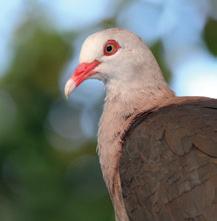
ZSL has been a big part of the story – our scientists and conservation teams have been working in Mauritius for years. Our Zoos played their part too; breeding has been critical in building up species numbers and we regularly send zookeepers to Mauritius to share their expertise and to support the reintroduction programmes. That we could walk in the island's Black Gorges National Park during my visit, surrounded by pink pigeons and echo parakeets, is proof of the power of conservation.
In this magazine you’ll read about our work to restore one of Britain’s best-loved animals, the dormouse, and our role in returning other species to our shores. New research has shown that animals are vital in the fight against climate change. They help our
landscapes store carbon that would otherwise filter into our atmosphere. Protecting and even returning species is not just important to their survival –it’s key to our own survival.
You’ll also meet some of the new animals who have arrived at our Zoos, like our new lion pride at Whipsnade. As natural spaces shrink, our role as a Zoo becomes all the more important: guarding species against extinction and inspiring visitors to want to make a difference.
I couldn’t be prouder to be part of such an important organisation, and I hope you feel as proud as I do to be a ZSL member. Without you, none of this would be possible.
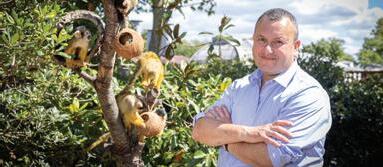 Matthew Gould
Matthew Gould
The Serengeti might be officially home to the world’s biggest animal migration, but it has stiff competition from our conservation zoos this summer. Meet our new lion pride, a dragon from the jungle isles of Indonesia, a rare vulture chick called Egbert and the primate world’s
There's a new roar in town. Three African lions – sisters Waka and Winta, and male Malik – have taken up residence at Whipsnade this summer. Working with lions is like nothing else says Steve Merrick-White, Deputy Team Leader of Whipsnade’s Predator team. “It feels incredible to have a pride back at Whipsnade. All three lions are settling well – Waka is the most confident one, but all three love to chase and play. We're hoping that Malik will take a shine to our lionesses and we'll have cubs in our pride before too long.” Lions are one of the only cat species to work together when they hunt, and they use this teamwork to tackle prey that a single lion could never catch on their own – even young rhinos and giraffe. To make sure they have enough energy for these superfeline feats of strength, lions will sleep up to 21 hours per day, just like your pet cat at home.
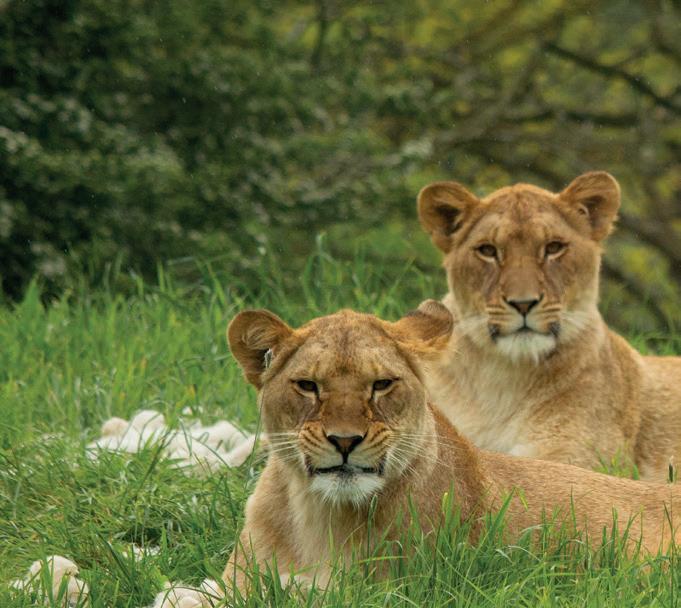
(Panthera leo)
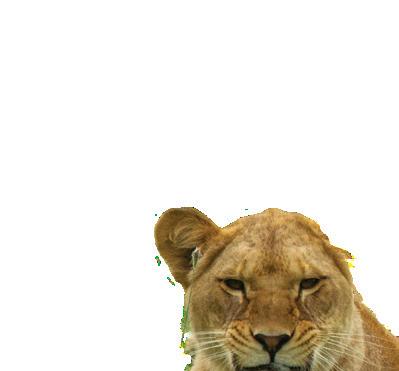

FOUND: Savannahs of eastern and southern Africa
SIZE: Up to three metres long, from nose to tail tip
DIET: Large herbivores that also live on the savannah, like antelope and zebra
THREATS: Persecution by people, shrinking habitat and lack of prey
DID YOU KNOW? Lions are known as the king of beasts, but ‘queen’ might more appropriate, as it’s the female lions who tend to do the hunting. It’s the male lion’s job to defend the pride’s territory from other lions.
This summer, London Zoo’s giraffe and zebra herds are welcoming a new guest to their historic home – an ostrich! Despite the common misconception that ostriches like to hide their head in the sand, ostriches are actually a very inquisitive species, says zookeeper Becca Keefe. “They are constantly exploring the world via their beak. The most wonderful thing is seeing an ostrich dancing when they get excited by something.”
Ostrich, zebra and giraffe regularly share the savannahs of Africa, and studies show that other animals will even relax around giraffes, knowing that the giraffe's supreme height means they can spot approaching predators from miles away. “The species are regularly cared for together in zoos around the world, and it’s going to be really exciting having them together at London Zoo,” says Becca. “Though in my experience, ostrich don’t usually pay much attention to giraffe or zebra.”

(Struthio camelus)
FOUND: Savannah and scrubland across Africa
SIZE: Up to three metres tall
DIET: Mainly plants and seeds, though they will eat insects, snakes, lizards and rodents
THREATS: Hunting for their feathers, eggs and meat

DID YOU KNOW? Ostriches are the world’s largest bird and they’re also the fastest running bird. They’ve adapted to evade Africa’s top predators and can reach a top speed of 70kmph. When running isn’t an option, they can use their powerful legs to kick predators.
This vulture chick had a very unusual start in life – it's only just met its mum, at four months old. Ruppell’s griffon vultures, the species that Egbert belongs to, are Critically Endangered. So, when mum Philomena laid her latest egg, having already lost one egg the previous year, our keepers decided to move Egbert to an incubator to give the egg the best possible chance of survival. Kept at a toasty 36.8°C, Egbert hatched in March and met the smiling faces of our zookeepers, who were on hand to help Egbert break free of the egg membrane. Four months later, with round-the-clock feeds and a diet of quail, mouse and rats, Egbert has grown 70 times in weight, from 115g at hatching to around 8kg now. Look out for Egbert in Land of the Lions.
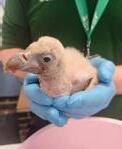
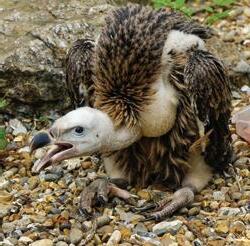
Ruppell’s griffon vultures are the world’s highest-flying bird. They have been recorded flying almost 11,000 meters above sea level – the same height as most aeroplanes.
Vultures play a critical role in our ecosystems, disposing of dead animal carcasses that would otherwise spread disease.
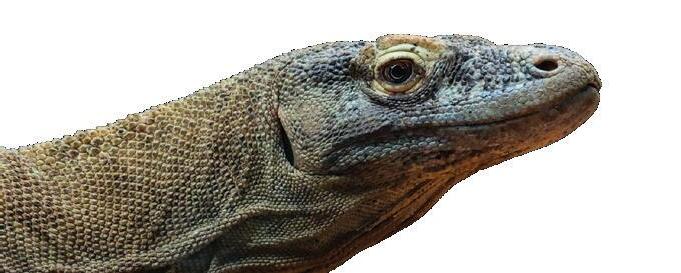
FOUND: Indonesian islands Komodo, Gili, Motang, Rinca and Flores
SIZE: Up to three meters long, from nose to tail tip
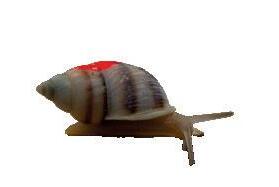
DIET: Deer, water buffalo and wild boar, though they will scavenge almost any kind of meat
THREATS: Loss of prey to human hunters and rising sea levels due to climate change
DID YOU KNOW? Komodo dragons are one of the few animals that can reproduce by parthenogenesis, which means that the female can fertilise her eggs without a male present. It’s a useful evolutionary tactic for a species found on remote jungle islands.
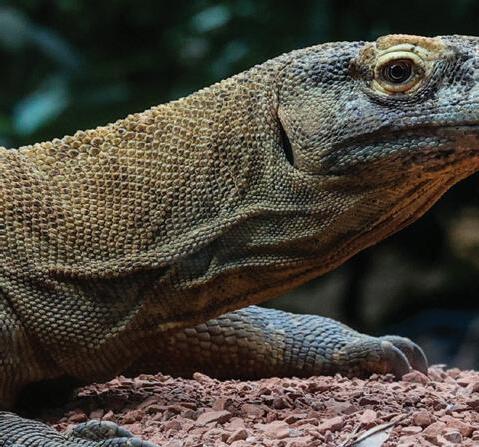
Ten-year-old Khaleesi the Komodo dragon belongs to the largest species of lizard in the world. Unlike many habitats, where it’s mammals who sit at the top of the food chain, Komodo dragons are the top predators on the Indonesian Lesser Sunda islands where they are still found. Khaleesi arrived at London Zoo in May, from Paignton Zoo, and she’s already putting the team at London Zoo to the test. “She's tremendously fast, agile and loves her food. She's also very playful in nature and has responded really well to enrichment, such as scent trails and hidden food,” says Komodo dragon keeper Joe Capon. Komodo dragons are incredibly powerful, and can generate great bursts of speed, but they often rely on stealth to catch their prey – surprising passing deer or wild pigs and delivering a fatal, venomous bite. Their venom causes continual bleeding and eventually shock in the unlucky animal, so the Komodo dragon can follow behind calmly, knowing they’ll eventually get their meal.
While we’ve been welcoming so many new faces, we’ve also said goodbye to a few – 1,764 in fact. Earlier this year, 1,764 tree snails left London and Whipsnade Zoos and made the long journey by plane to French Polynesia, a group of islands midway between Australia and South America. Polynesian tree snails, also known as Partula snails, are only found on the remote islands and were almost wiped out by the Rosy Wolf snail, a carnivorous snail introduced to control rampant African land snails (themselves introduced as a food source). Luckily, invertebrate experts from London Zoo managed to rescue enough tree snails in the 1990s to begin a breeding programme. After decades of work, and a nine-year reintroduction programme, we have reintroduced 21,000 tree snails to the islands, including 11 Extinct in the Wild species and sub species.
Three-year-old sisters Mana and Minnie, and twoyear-old Naya, arrived at Whipsnade Zoo from Orsa Predator Park in Sweden earlier this spring, joining Whipsnade’s brown bear Cinderella. All three bears hibernated through Sweden’s cold winter, but now that they’ve arrived they’re a bundle of energy, says zookeeper Sarah McGregor. “It's wonderful to have the new arrivals here and to see the young bears enjoy all our enrichment, splashing in the pool and climbing high in the trees,” says Sarah. “The three new bears have made themselves at home here at Whipsnade and they all have such an inquisitive and playful nature. All three bears are spending time every day with our resident bear Cinderella, out in the paddock, so they can all get to know each other.”
Brown bears are one of the world’s most successful predators, found throughout Europe, Asia and North America. One of the secrets to their success is their diets – brown bears are omnivores and, though they will eat meat if they can catch or find it, most of their diet is fruit, nuts and plants. Our zookeepers regularly scatter or even bury food in their enclosure, which encourages them to use their incredible noses and powerful paws to find it. Brown bear noses are around 2,000 times better than our own – they even have better noses than bloodhounds.
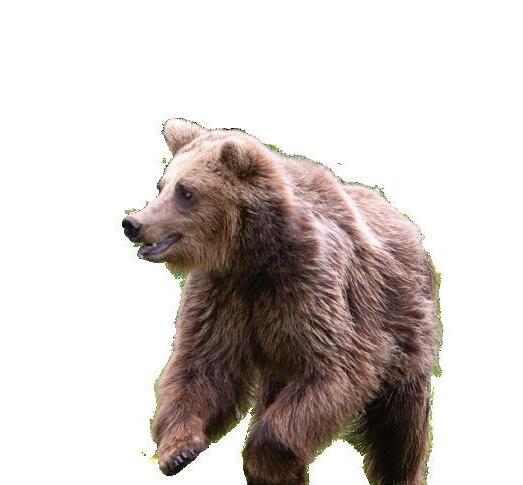

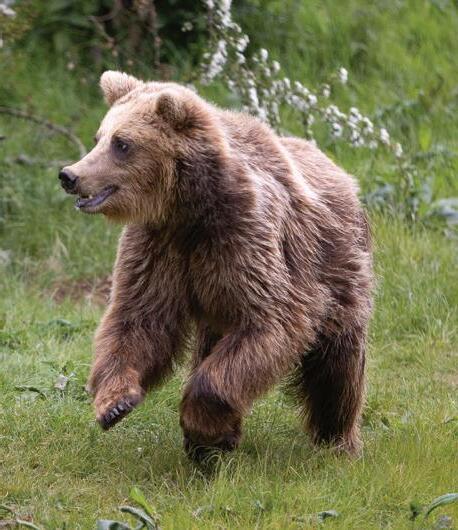
(Ursus arctos arctos)
FOUND: Mountain forests across Europe and Asia
SIZE: Up to two metres long

Each snail is marked with a dot of UV paint to help our scientists monitor the snails after they're released.

The snail’s underbelly is one giant foot, and they use mucus to help them slide along and grip surfaces. In fact, they are known as gastropods, which means ‘stomachfoot’ in Latin.
Partula snails feed on decaying plants and fungi, helping to keep forests healthy by recycling nutrients from plants into soil matter.
This summer, babirusas and François’ langurs are moving in together at Whipsnade Zoo. Our troop of four langurs – male Wang and females Lee Lee, Lulu and Nguyen – will be joining babirusa brothers Jaya and Riko in a new home in our Asia zone. “The new space recreates a natural relationship – wild babirusa have been observed spending time in close proximity to primates, perhaps waiting for partially eaten fruit to be dropped,” says Hayley Jakeman, Team Leader of Primates at Whipsnade. “It’s very exciting to see how the two species interact, and we’re building lots of levels into their home to allow them to utilise different areas. Sixteen trees and several climbing structures will provide climbing opportunities for the langurs and shade for the babirusas. There’s even going to be a pond for Jaya and Riko to wallow in.”
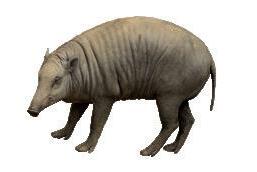
babyrussa)
FOUND: Forests and wetlands of Indonesia
SIZE: Up to one metre from nose to tail
DIET: Almost anything! Plants, fruit, nuts, mushrooms, insects, fish and small mammals
THREATS: Poaching for their meat and deforestation
DID YOU KNOW? The male babirusa’s tusks grow down at first, but then they curve upwards – piercing through the pig’s top jaw and out of their snout. If they don’t wear them down or break off while fighting, the tusks can grow into the babirusa’s forehead and eventually the brain, leading to an unfortunate death.
Have you spotted the latest arrivals in Rainforest Life yet?
White-faced saki monkeys Milagre, Kaituma and their one-year-old daughter Maya journeyed from Whipsnade to London in the spring and have been making themselves at home in the rainforest. “It’s the first time they’ve shared a home with other species, so it’s going to take them a little while to get to know everyone,” says Hayley Jakeman, leader of Whipsnade’s Primate team. “We prepared them for the move by training them to walk into their travel crates under their own steam – positive reinforcement training really helps make the short journey easier for everyone.” Saki monkeys are sexually dimorphic – that means that males look different to females. Milagre, the male, has a black coat and striking white face, while Kaituma, the female (pictured), has a brownish-grey coat with pale stripes around her nose and mouth.
(Trachypithecus francoisi)
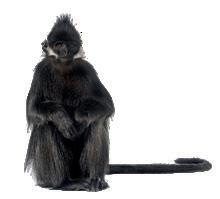
FOUND: Mountainous forests in China and northern Vietnam
SIZE: Up to 60cm tall, but with a tail almost double their height

DIET: Mainly made up of leaves. Will also eat fruit, flowers and insects
THREATS: Hunting for use in traditional medicine and deforestation
DID YOU KNOW? Langurs live in matriarchal societies, where the females lead the group and take care of raising young. François’ langurs are born with a thick orange coat. This helps the whole troop keep an eye on the little ones and encourages all adults in the group to care for them.
Pithecia)
FOUND: Rainforests of northern South America
SIZE: Around 30cm long, with a tail the same length
DIET: Fruit, seeds, nuts, leaves and insects
THREATS: Hunting, deforestation and being captured for pets
DID YOU KNOW? Saki monkeys are arboreal, which means they spend most of their lives in trees. They’re expert climbers and are even nicknamed ‘flying monkeys’ because they will leap up to 10 metres between trees.
As many animal lovers will know, it can be tricky to pick a favourite. “I love penguins,” she eventually concedes. “When I think about penguins, I’m sitting in a hide watching a raging sea full of hungry sharks and these tiny birds appearing out of the sea, calling to their chums. Penguins are irresistibly plucky, and their drive to look after their chicks is so powerful. Of course,” she adds hastily, “cheetahs are great too. And elephants!”

Nicolette Scourse grew up in Australia and puts her enthusiasm for animals down to her upbringing there. “Wildlife was a part of life in Australia. You didn’t see an animal occasionally; you saw them every day.” Wallabies were everywhere, and emus would wander around the tennis courts.
“Animals became my thing, and my mother would always make my bed cautiously, alert for bunched sheets held tight by the claws of some creature I had brought home.”
In 1951, a seismic event in Nicolette’s childhood cemented her relationship with animals – a polio diagnosis. “It attacks the nerves, causing some muscles to waste away. I was in a wheelchair for a year and a half before I learnt to

walk again,” explains Nicolette. “I went to school once a week and my classmates sat round my wheelchair. Beyond that I didn’t have much contact with other children and, in public places, I was stared at. I had a great affinity and love for animals, which became a coping mechanism.”

It all changed in 1958, when Nicolette’s family decided to relocate to Britain. She describes her first visit to London Zoo as a rare happy memory during a difficult period of adjustment. “There was a large Chinese community in Australia, and seeing Chi Chi the panda reminded me of home,” says Nicolette. “It sounds absurd to admit, but when I first arrived I really struggled with British wildlife. They were so new to me, I couldn’t tell a chaffinch from a robin!” She didn’t let that hold her back, and went on to study zoology at university before beginning a career as a conservationist. Nicolette began as an animal behaviour researcher, delivered lectures on conservation, wrote several books and later became leader of Bath’s Wildlife Watch group – the junior branch of The Wildlife Trusts. It wasn’t until 2017, after Nicolette had become a grandmother, that she reconnected with ZSL’s two conservation Zoos
we were bringing our grandson to Whipsnade Zoo every week. We loved it!” she says proudly. On each visit, rather than rushing round to see everything, they would visit a few animals and spend longer with each one. “Opening their eyes to wildlife is a really important part of my role as a grandparent.”
As a conservationist, being a member of ZSL also has a serious side to it. “The present situation with the environment is horrific. It gets me right in the gut,” says Nicolette. “We’re losing species at an alarming rate, and zoos are absolutely critical for conservation. Supporting ZSL is one way to do something towards the big picture. “Being a conservationist for half a century, you get used to being called a doomster. But being part of ZSL I don’t feel so alone – I’m part of a family that creates hope for the future.”
We want to hear more of your stories! Get in touch at wildabout@zsl.org to share your experience of being a member.

“Wildlife was a part of life in Australia. You didn’t see an animal occasionally; you saw them every day.”

WHIPSNADE ZOO
22 JULY - 4 SEPTEMBER
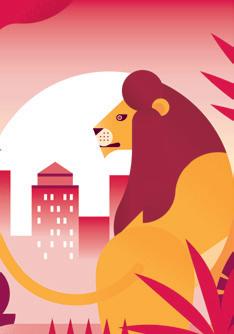
LONDON ZOO
21 AND 28 JULY
1 2
This summer, hang out afterhours at London Zoo on our special, adult-only evenings. Unravel the mysteries of mating in the animal kingdom on our birds and bees tour, take on friends in animal-themed games around the Zoo, or head to our street food market and kick back on the lush lawns. Numbers are limited and tickets move faster than a hungry hippopotamus, so check our website for the latest information and availability.
3
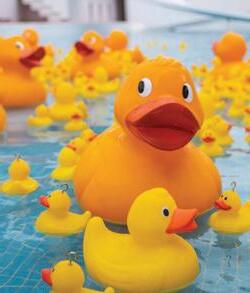
LONDON ZOO
22 JULY - 3 SEPTEMBER
Go head-to-head with your ‘troop’ and channel your animal skills to find out who takes top spot in this summer’s Really Wild Challenge! Throughout the summer holidays the Zoo will be filled with a host of favourite family games, all with a really wild twist! Match the faeces to the species with Poo Dunnit, help save an animal ecosystem in Savannah Scramble, and get some bees safely home in Hurry to the Hive. Leaders of the pack can take their rightful place on our winner's podium.
Tear me out and stick me next to your calendar or on the fridge
WHIPSNADE ZOO
29 JULY AND 5, 12, 19 AUGUST
Enjoy a different side of Whipsnade Zoo with our extended opening hours over the summer. On selected dates in July and August, the Zoo will be staying open for visitors until 9pm, giving you a chance to be there for animal bedtimes and see some species who are more active in the evening, like our cheetahs. Cafes and restaurants will be staying open so you can enjoy a drink or a meal as the sun sets on the Zoo.
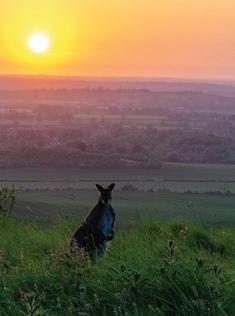

LONDON AND WHIPSNADE ZOOS 21-31 OCTOBER*
For hairy, but not too scary, Halloween fun, families can trick-or-treat themselves to a trip to London and Whipsnade Zoos for our special October half term event, Boo at the Zoo. Celebrate all things spooky with a fang-tastic day of pumpkin decorating, party games, terrifying talks and devilish demonstrations. At London, your little monsters will also be able to transform into black cats with the help of our Fearsome Face Painters.
Long summer evenings are here, the holidays are just round the corner and we’ve got the perfect events for animal lovers. Don’t forget to put the dates in your diary so you don’t miss out, and keep an eye on member emails for updates on timings. LONDONZOO.ORG/WHATS-ON
LONDON AND WHIPSNADE ZOO
29 JULY AND 10 AUGUST
*Main event runs 21-29 October at Whipsnade Zoo, with certain activities extending to 31 October 4 5 6
Join us at our two conservation Zoos this summer to show some extra love to our big cats, like Gaysha the Sumatran tiger and Bhanu the Asiatic lion. On International Tiger Day (29 July) and World Lion Day (10 August) we’ll be holding special activities for you to get your claws into, including animal talks and feeds, enrichment and keeper question time. Learn all about what makes these felines the top cats of the animal kingdom.
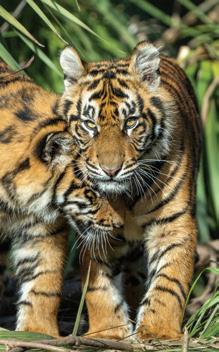
They might be small, but oysters can transform their marine environment. One oyster can filter 200 litres of water per day, which can help to reduce the build up of harmful pollutants. Besides being ocean cleaners, oyster reefs also provide valuable habitat and a food source for other marine life.
We’re on a mission to restore Britain’s native oysters, which have all but disappeared. Over the last few years we’ve already set up 142 oyster nurseries across England and Wales. Each nursery contains 27 oysters, and each oyster can release millions of larvae to repopulate our coastline. This summer The Wild Oyster Project will begin building oyster reefs where thousands of native oysters will be restored in an effort to boost British native oyster populations.
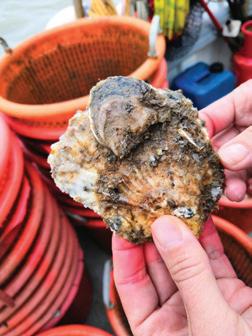
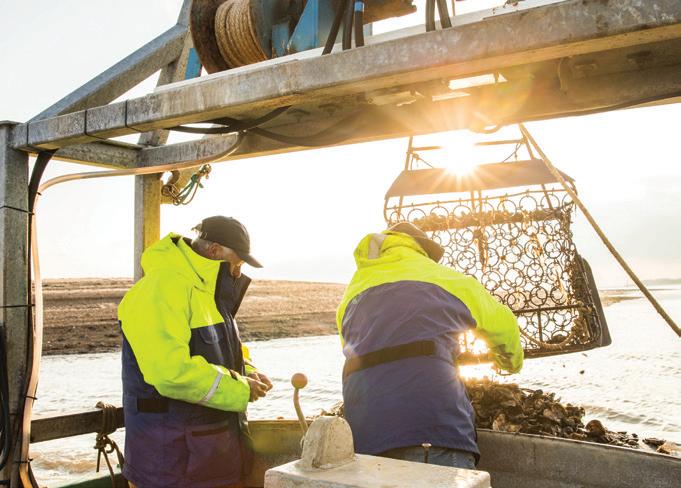
Hippos might come with a fearsome reputation, but did you know that they can actually be trained? Whipsnade’s zookeepers work closely with our hippos to make vital health checks easier for everyone, including encouraging them to show us their enormous teeth (the biggest of any land animal) for regular dental checks. In our latest experience, Meet the Hippos, you’ll be able to join one of our expert zookeepers, feed one of our commons hippos and learn about what it takes to care for the world’s third largest land animal. Did you know that hippos make their own moisturising sunscreen, or that they don’t really swim? Better yet, Gold Members, Patrons and Fellows get 10% discount on all of our zoo experiences. Book at whipsnadezoo.org/ experiences

Earlier this year, India announced that its tiger numbers have doubled in 20 years, reaching 3,100. It’s a major success for the country and the Indian Government’s Project Tiger campaign, and comes a year after Nepal announced that its own tiger population had doubled.
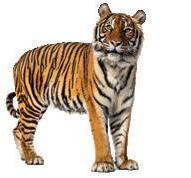
Our conservationists based in Nandhaur Wildlife Sanctuary, northern India, have been working alongside the Wildlife Institute of India since 2016 to protect tigers, as well as Asian elephants and sloth bears. The sanctuary is an important stepping stone for tigers travelling across the Himalayan foothills between northern India and Nepal – a country where we also have teams on the ground.
Rising tiger numbers aren’t just good news for big cat fans, tigers are known as an ‘umbrella species’, and by protecting them and restoring their habitats, we also create space for countless other species.
The armour-plated sturgeon, lost from UK rivers for 50 years, is on course to make a comeback. That’s the plan of the new UK Sturgeon Alliance, set up by ZSL’s conservationists and several passionate partner organisations with a single goal in mind: to see these ancient fish return to our waters.

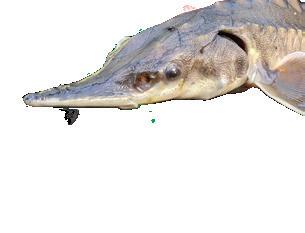
Sturgeon can reach five metres long and live for over 100 years. They patrolled our rivers and coastlines until relatively recently, feeding on crustaceans and small fish, but they are in fact an ancient order of armourplated fish that evolved during the Early Jurassic period.
Sturgeon have long been prized for their meat and eggs (also known as ‘caviar’) and were even declared ‘royal fish’ by King Edward II in the 14th century. Eventually the intense hunting, and the introduction of dams, took its toll. Sturgeon begin their lives in rivers before journeying to the coast, regularly returning to the rivers they were born in to breed. Overfished and without access to many rivers, their population plummeted, finally disappearing from our rivers 50 years ago.
But sturgeon still survive in North America and other parts of Europe, and have been successfully reintroduced to several European countries. With strict protection now in place in the UK, the time is right for sturgeon to return. This spring, we published a roadmap for the recovery of sturgeon in the UK, outlining the steps needed to bring sturgeon back to the UK – including the restoration of their habitat and potential reintroductions.

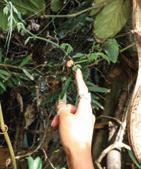
We celebrated the 30th anniversary of our Friendly Spider Programme, which has treated over 5,000 people with a 98% success rate, by conducting a nationwide search for some of the UK’s biggest arachnophobes. The brave bunch of volunteers journeyed from across the country to face their fears and embrace a lifetime free from a debilitating dread of spiders. The programme includes learning from zoo experts about the importance of spiders, and a hypnotherapy session – run in partnership with the Centre of Clinical Hypnosis – before a tour of our spider walk-through and the opportunity to meet Rosie the bird-eating spider. Find out more about the Friendly Spider Programme at londonzoo.org/fsp

It’s even hoped that some of the recovering sturgeon populations in Europe may also seek out UK waters, and it’s important to make sure our waterways are ready for their return. Members of the public can report any sightings to savethesturgeon.com
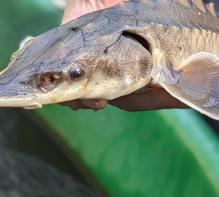
The hazel dormouse, with its blackcurrant eyes and twitching whiskers, is Britain’s mostloved rodent. But habitat loss and climate change also make it one of our rarest. Vet Elyse Smith gives Wild About the lowdown on ZSL’s work to bring them back from the brink.
Dormice are named after ‘dormir’, the French word for sleep. They snooze during the day and hibernate through winter.
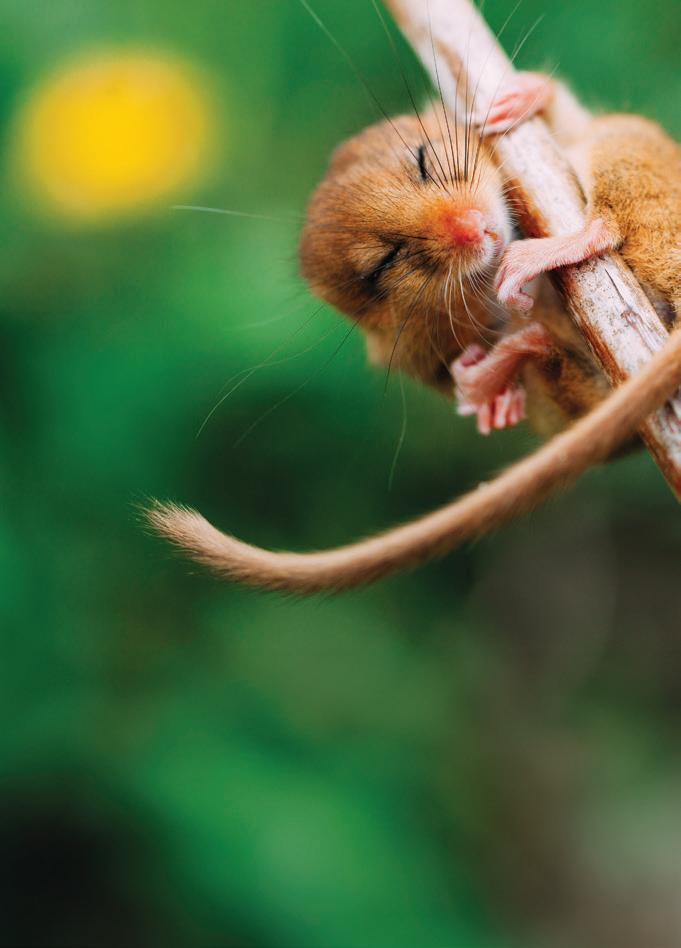
Dormice started to disappear from Britain’s woodlands in the 1900s, as urban areas and agriculture expanded. Dormice are arboreal, which means they’re adapted to life in the trees and rarely venture onto the ground, but thinning forests and vanishing hedgerows meant they had nowhere to go. Their decline has only sped up since the turn of the century, and it’s thought climate change could be having an effect. Warmer winters cause hibernating dormice to wake early, when there isn’t enough food to eat. Data collected by the People’s Trust for Endangered Species (PTES) shows that the number of dormice in Britain has halved this century.
Since 1993, the programme has released over 1,000 dormice to over 20 locationsEngland.across
We joined forces with PTES, Natural England and the Wildwood Trust to give dormice a fighting chance. Dormice had already vanished from 17 English counties, but we vowed they would disappear from no others. Together, we run a reintroduction programme across England, targeting counties where dormice have already disappeared. One of the first steps our scientists took was to analyse the woodlands for diseases that could be a danger to our dormice, while our partners started to restore areas of woodland for dormice to live in.

The dormice are bred at specialist facilities but, before they can be released in the wild, they come to a quarantine facility like the one at London Zoo’s vet hospital. They spend up to 12 weeks being cared for and monitored by us. It’s an important step to make sure they’re healthy and ready to make a new home in the English countryside. They have their poo checked for parasites or diseases. Each mouse even has a nose-to-tail examination under anaesthetic with one of our veterinary surgeons. Their eyes and mouths, abdomen and limbs are gently examined by hand, and we listen to their heart and lungs using a stethoscope. Each dormouse is then fitted with a tiny microchip to ensure they can be identified after they are released.

Whipsnade Zoo is already a haven for British wildlife, like red kites and butterflies, but plans are underway to open a native species conservation and breeding centre at the Zoo, where we can breed hazel dormice ready for reintroduction. We also hope to breed populations of red-backed shrike, a small bird that has all but disappeared from Britain, and the pool frog, which went extinct in the UK in the 1990s but we have since helped to reintroduce to areas of East Anglia.
When they’re ready to leave us, the dormice are paired into couples to encourage them to breed. Once they arrive in their forest home, they live together for two weeks in wooden dormouse houses. Each house is attached to a tree and surrounded by a mesh enclosure, allowing the dormice to adjust to their new home in safety, and food and water are brought to them by volunteers. The release locations are even kept secret to minimise stress to the shy dormice. Finally, after two weeks, the enclosure doors are opened and the dormice are able to leave to begin their new lives together.
2023

It’s not just dormice that we’ve helped to return to Britain. These are just some of the species that our scientists and vets are working to restore:
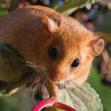

Beaver (Castor fiber)
We’re part of plans to return beaver to England. Hunted to extinction in the 1500s, beaver could create habitats for other animals and reduce flooding.
Pine marten (Martes martes)
This treetop hunter is now only found in the Scottish Highlands, but our vets are helping to start a new population in the Forest of Dean.
Chequered skipper (Carterocephalus palaemon)

Last seen in England in 1976, we’ve helped start a new population in the Midlands with butterflies reintroduced from Belgium.
Sand lizard (Lacerta agilis)
The sand lizard has been reintroduced to coastal areas of Britain. Our vets journey to the release sites every year to check how they’re doing.
Corncrake (Crex crex)
Corncrakes are summer visitors, migrating to Africa for winter. Few now return to our shores, but birds bred at Whipsnade have helped set up a new population in Cambridgeshire.

Dormice are not true mice. They’re more closely related to squirrels.
If you go down to the woods today, you’re sure of a big surprise. As well as bears, tigers and lions, Whipsnade is also home to countless British species. Can you help find them on your next visit?
Zookeepers have been recording the animals they’ve seen on their rounds, but their notes have been scrambled. Can you find them in the word search below?
DID YOU KNOW?
Britain is also home to a variety of marine life, from killer whales to harbour seals.
JOKE
Question: Why did the fox hunt a rabbit?
Answer: He fancied some fast food.
Many of the species that we know and love today were actually introduced to Britain by humans, often to provide a food source for hunters. Can you guess which three species below aren’t native to Britain?
A
D Garden snail
E Rabbit
B Scarlet tiger moth
JOKE
Question: What do you call an owl with a sore throat?
Answer: A growl!
DID YOU KNOW? C Green woodpecker
Garden snails and rabbits were introduced to Britain by the Romans as a food source and, in the case of rabbits, for their fur. Pheasants originate in Asia, and it’s thought that the Romans brought them in Europe, but it wasn’t until the Normans conquered England that they arrived here.
and
You might not have seen them, but they’ve seen you! Britain is home to five species of owl, including the barn owl and the tawny. They tend to hunt at dusk or during the night, which is why you might not have seen them. And how do they find tiny rodents to gobble up at night? Owls have exceptional eyesight and hearing, which helps them to detect the scurrying of mice or voles. They even have special feathers on their wings which muffle the sound of their wing flaps, allowing them to surprise their prey.
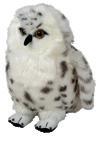
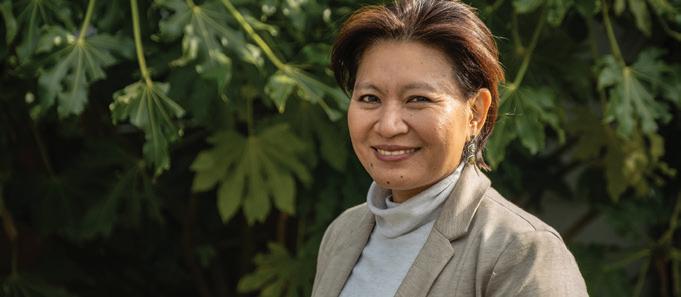
A bit later in life than some. For more than 10 years I worked in finance and business operations. But, in 2010, I undertook a Masters in Sustainable Finance, and from there I was able to shift towards humanitarian causes in a role at the United Nations, and then onto conservation, first at WWF and now leading ZSL’s Thailand team.
One rainy night in 2017, I received a message from a colleague, telling me that 12 elephants had been killed in Myanmar’s Ayeyarwaddy Delta. Asian elephants were being killed for their skin and other body parts, and Myanmar was losing one wild elephant a week. We launched an emergency initiative to train, equip and deploy anti-poaching teams, and since then I’ve been dedicated to speaking out for those who can’t.
Khlong Nakha Wildlife Sanctuary in southern Thailand. It’s part of a network of protected forests that straddle Thailand and Myanmar, and it’s a haven for Asian elephants. Thailand has the largest population of wild Asian elephants in Southeast Asia so the future of the region’s elephants depends massively on our work in Thailand.
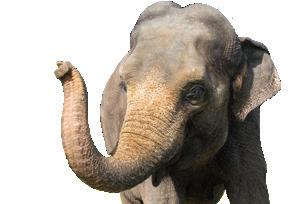
Beautiful, intelligent and shy animals, but they can also be dangerous. Whole herds will often venture into villages and farms to feed on energyrich crops, like sugarcane or bananas, and can unintentionally damage property. In the worst-cases, they can even kill people, which often leads to retaliatory killings of elephants.
Working with communities to find solutions to living alongside elephants. It could be building watchtowers and early warning systems to spot approaching elephants. It might be helping farmers transition to different crops, providing seed funds to set up a business, or training in other sustainable careers, like ecotourism, to reduce their reliance on the land for their livelihood.
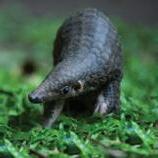
They’re in high demand for their scales and claws, which are used in traditional medicine. Their meat is even considered a delicacy in some Asian countries. But pangolins are very important to the ecosystem. One single pangolin can consume around 70 million ants and termites per year. Without pangolins, termites and ants would run rampant, eating plants and animals throughout the forest.
If touched or grabbed – using their scales to fend off predators – a bit like a hedgehog. Sadly, this makes them easy prey for poachers. This year, we’ve partnered with the London Metropolitan Police to help Thailand's police force. We’ve also joined forces with the Thai transport sector to combat smuggling by increasing monitoring along routes.
Is that conservation is not only about wildlife, it’s also about helping your community care for its natural environment. Find ways to volunteer to support your local area, like litter clean ups. Volunteer locally on science projects, like ZSL’s own Thames monitoring programme. Talk about conservation to your friends and spread knowledge. And if you have time, read Edward O. Wilson’s fantastic book Letters to a Young Scientist.
May Moe Wah leads ZSL’s Thailand conservation team and is in charge of protecting Asian elephants, tigers and pangolins
Find your happy place in our gift shops this summer and take a little piece of the Zoos home with you. With every purchase supporting our work protecting animals in the wild, what’s not to love?
shop.zsl.org
We’ve got all your cuddle cravings sorted. From mini soft toys that make the perfect companion for little ones on long journeys, through to XL snuggles with giant soft toys. Our range of soft toys and puppets, featuring over 100 species, includes our most popular Zoo animals, like lions, tigers and penguins. We even have colobus monkeys, Komodo dragons and hippopotamuses for the true zoologists.
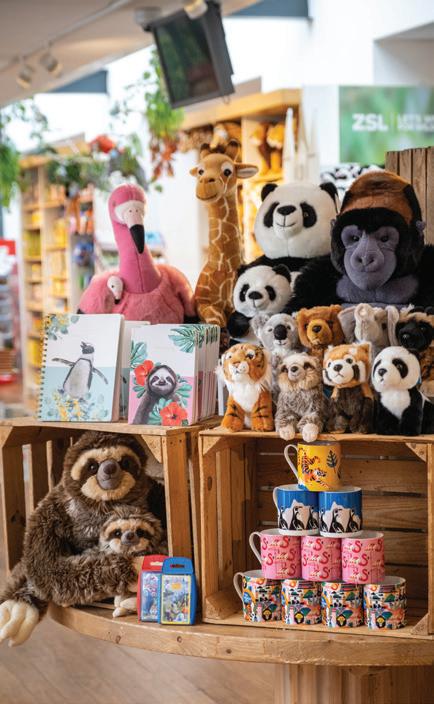
It wouldn’t be the Great British summer without a few days of Great British washout. Keep your little ones laughing and tantrums at bay with our range of games and craft sets. From exclusive London and Whipsnade Zoo Top Trumps sets (pictured), perfect for play on the go, to Poo Bingo (match the animal to their poo), to Lego and Playmobil building sets.
Become the envy of your office or take your hot chocolate to the next level with our souvenir mugs, designed by UK-based illustrator Owen Davey. Looking to bring a bit more of the Zoo into your home? Our homeware section has everything from tableware, kitchen accessories, prints and more.
Gold Members can grab 10% discount in our shops and on experiences using code PANGOLIN10
Back to school? Sorted. Packing off to university? You bet. Want to brighten up your office? We’ve got you covered! Our animal-inspired stationery range includes notebooks, pens, pencils, pencil cases, planners and craft sets – perfect for any desk.
